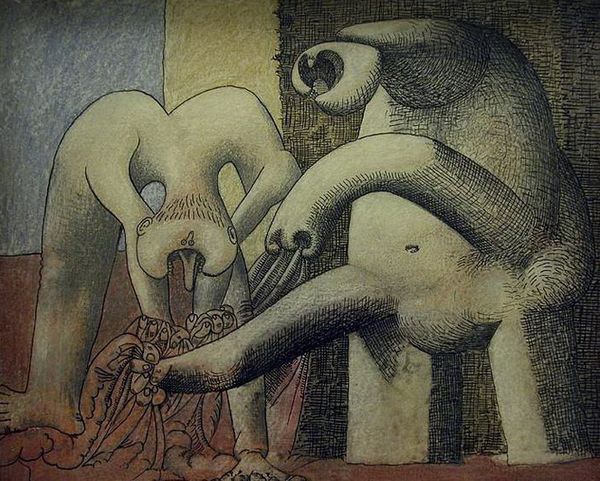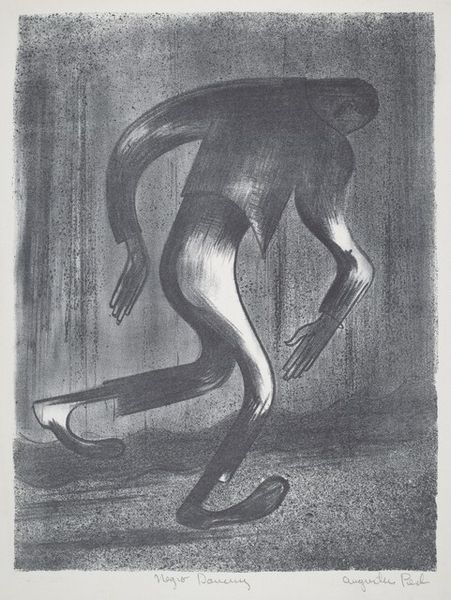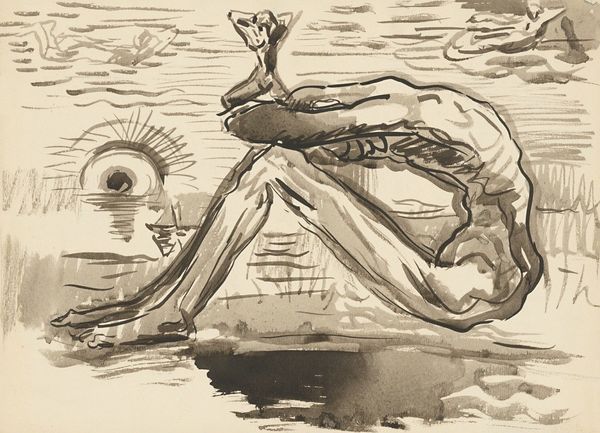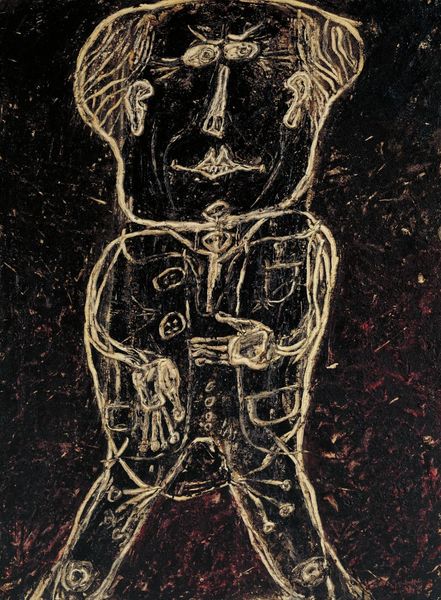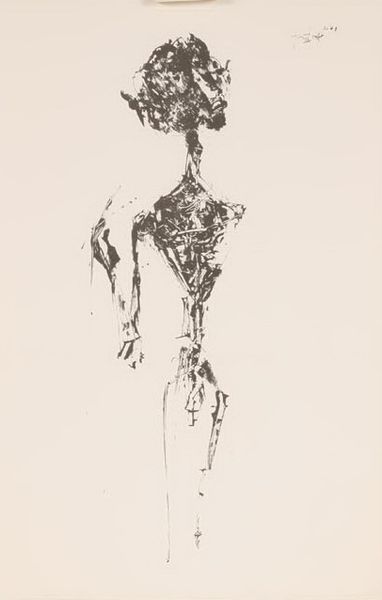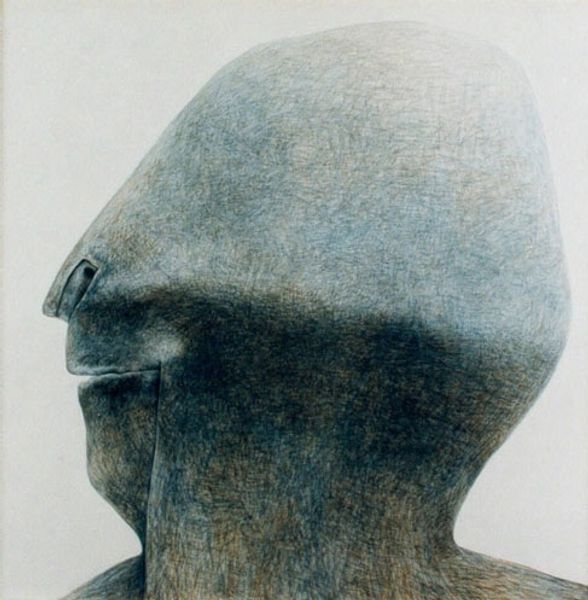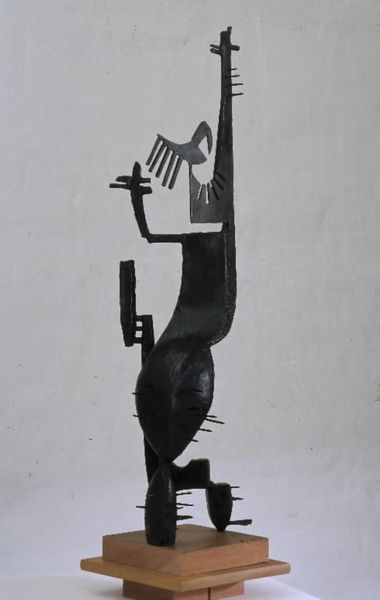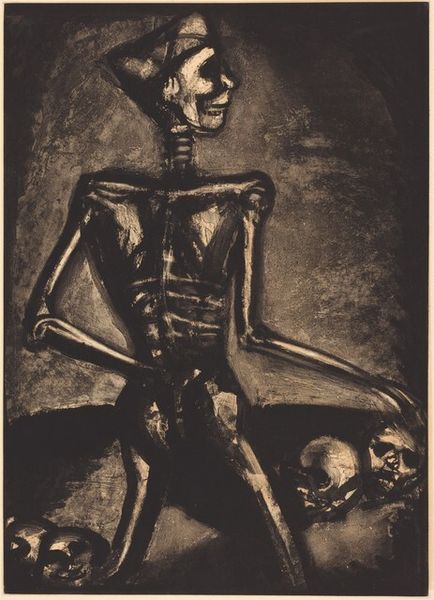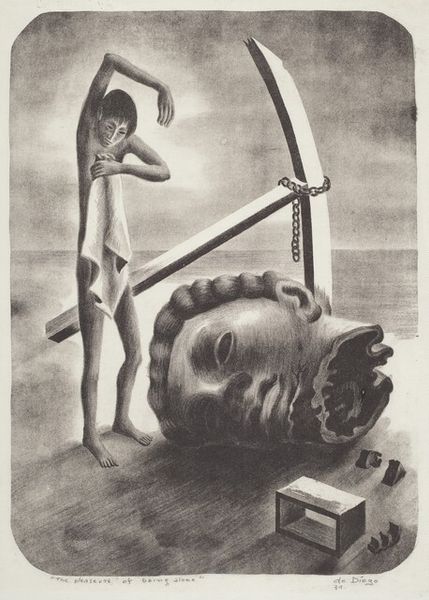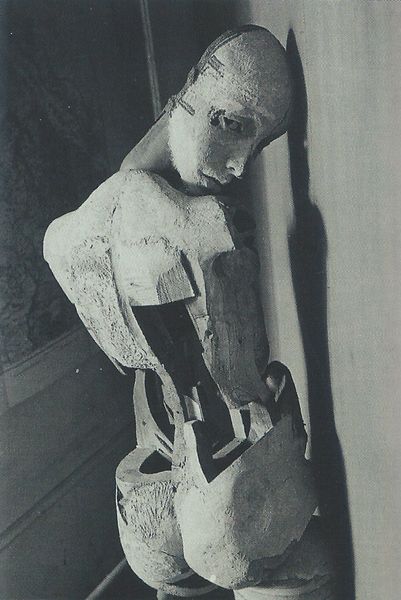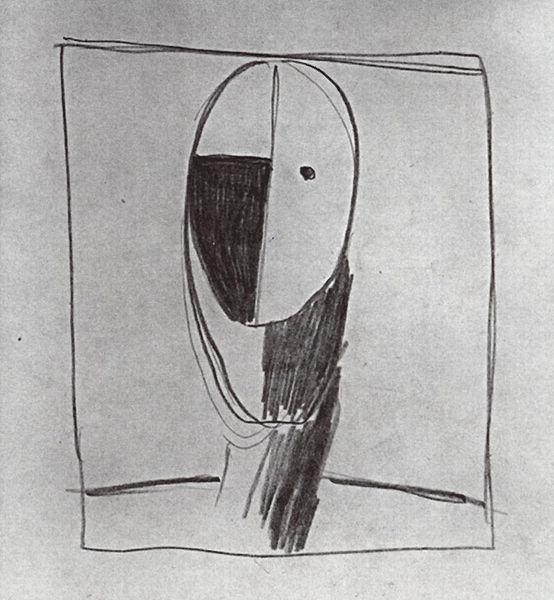
drawing, charcoal
#
portrait
#
drawing
#
sculpture
#
german-expressionism
#
charcoal drawing
#
figuration
#
charcoal art
#
expressionism
#
symbolism
#
charcoal
#
charcoal
Copyright: Public domain US
Curator: I find myself drawn to the palpable sense of isolation emanating from Alfred Kubin's charcoal drawing, "The Past (forgotten-swallowed)," created in 1901. The desolate landscape and the figure's unsettling posture create a uniquely somber experience. Editor: My first impression is one of stark, unnerving vulnerability. The figure's hunched posture, combined with what appears to be a smooth, beak-like form in place of a head, evokes an unsettling primal quality. The surrounding darkness deepens the atmosphere of unease. Curator: Absolutely. Kubin, known for his involvement with the Expressionist movement and his explorations of Symbolism, channels anxieties about societal decay, psychic trauma, and, notably, gendered vulnerability. The title suggests a fraught relationship with inherited history and lost collective identity. What is the image telling us about its particular era? Editor: Symbolically, the featureless head could be interpreted in a few ways. One interpretation is a bird-like form suggesting instinct, the figure devoid of higher-level thought and more an agent of unconscious drive. I note how it dominates, its whiteness standing out against the dark. It feels totemic almost. It suggests suppressed energies from a long time ago emerging into consciousness. Curator: That interpretation rings true. Moreover, consider the historical backdrop of 1901. Europe was on the cusp of immense change, rife with ideological conflict. The headless figure becomes a representation of historical and cultural amnesia or collective trauma that robs individuals and society of meaning. Kubin was influenced by philosophers, too, like Schopenhauer, whose philosophy centered on inherent suffering. Editor: Right, there's that too, a profound pessimism rendered visually. But I wonder, is the symbolism pessimistic in essence, or could the image also suggest potential? Bird symbols have often connoted transcendence, perhaps gesturing toward change and spiritual ascent even amid this apparent gloom and despair. Curator: A nuanced point. The figure might very well indicate potential change. Although this image could certainly benefit from broader engagement with more diverse voices within the discipline. Editor: Definitely something to explore. Overall, I believe this image holds such a unique power, regardless of personal feelings. The figure has become an enigma. Curator: The enigma is captivating, yes. Kubin's ability to provoke discomfort and, concurrently, stir critical thinking, is what solidifies the lasting importance of his work.
Comments
No comments
Be the first to comment and join the conversation on the ultimate creative platform.
